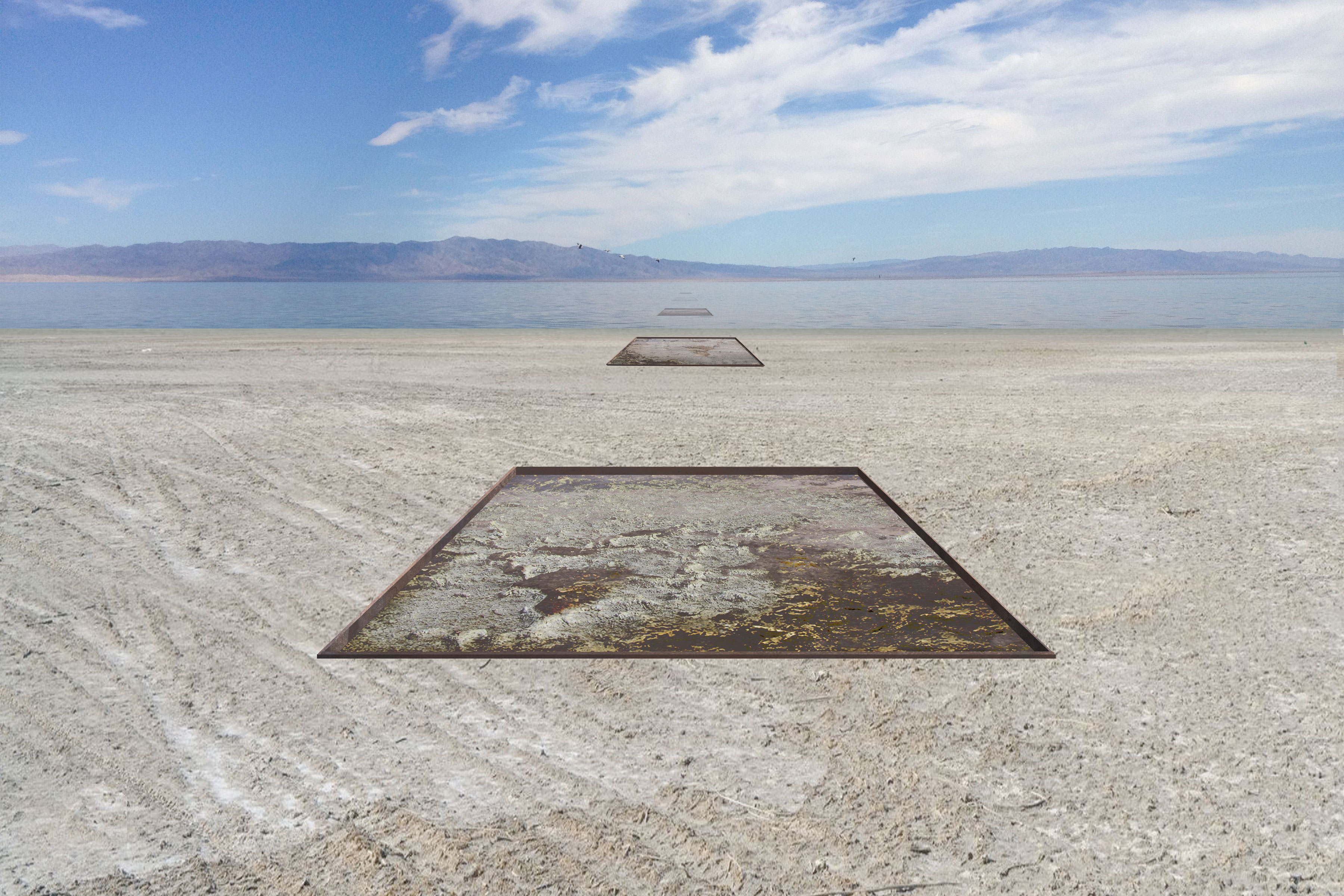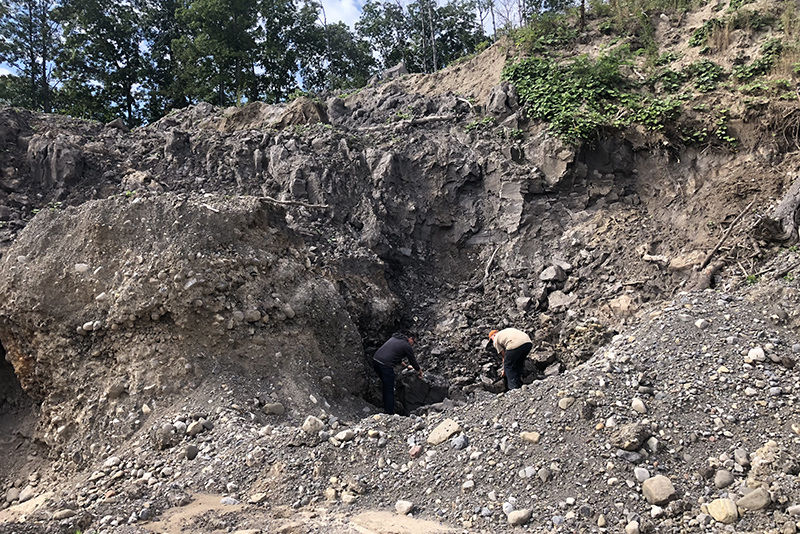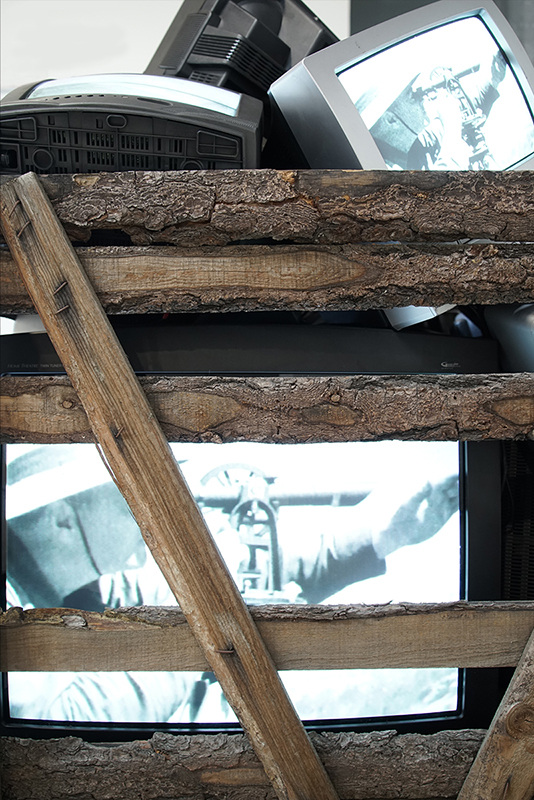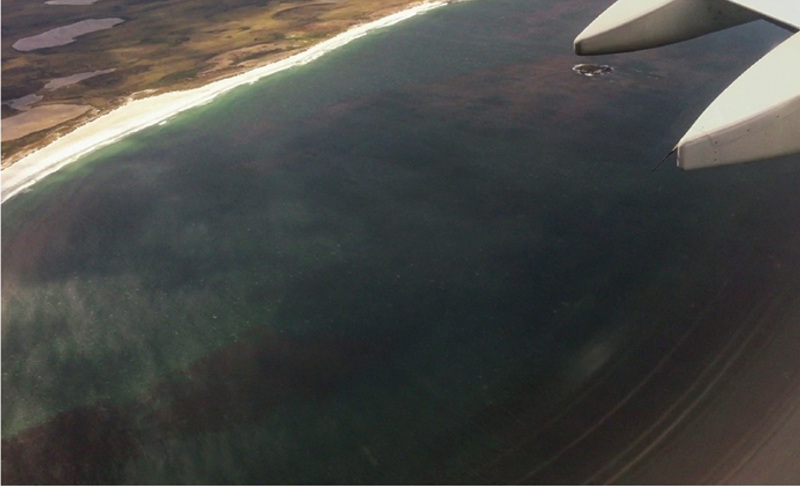
Maids of Petroleum
Every five years in Taft—a small oil town in California’s Central Valley—a new group of “Maids of Petroleum” is chosen, continuing a century-old local beauty pageant tradition. Set against a landscape of worn commercial strips, quiet neighborhoods and aging infrastructure, this documentary short film observes how the Maids’ ritualistic performance sustains civic pride and collective identity even as the foundations of that world slip away.


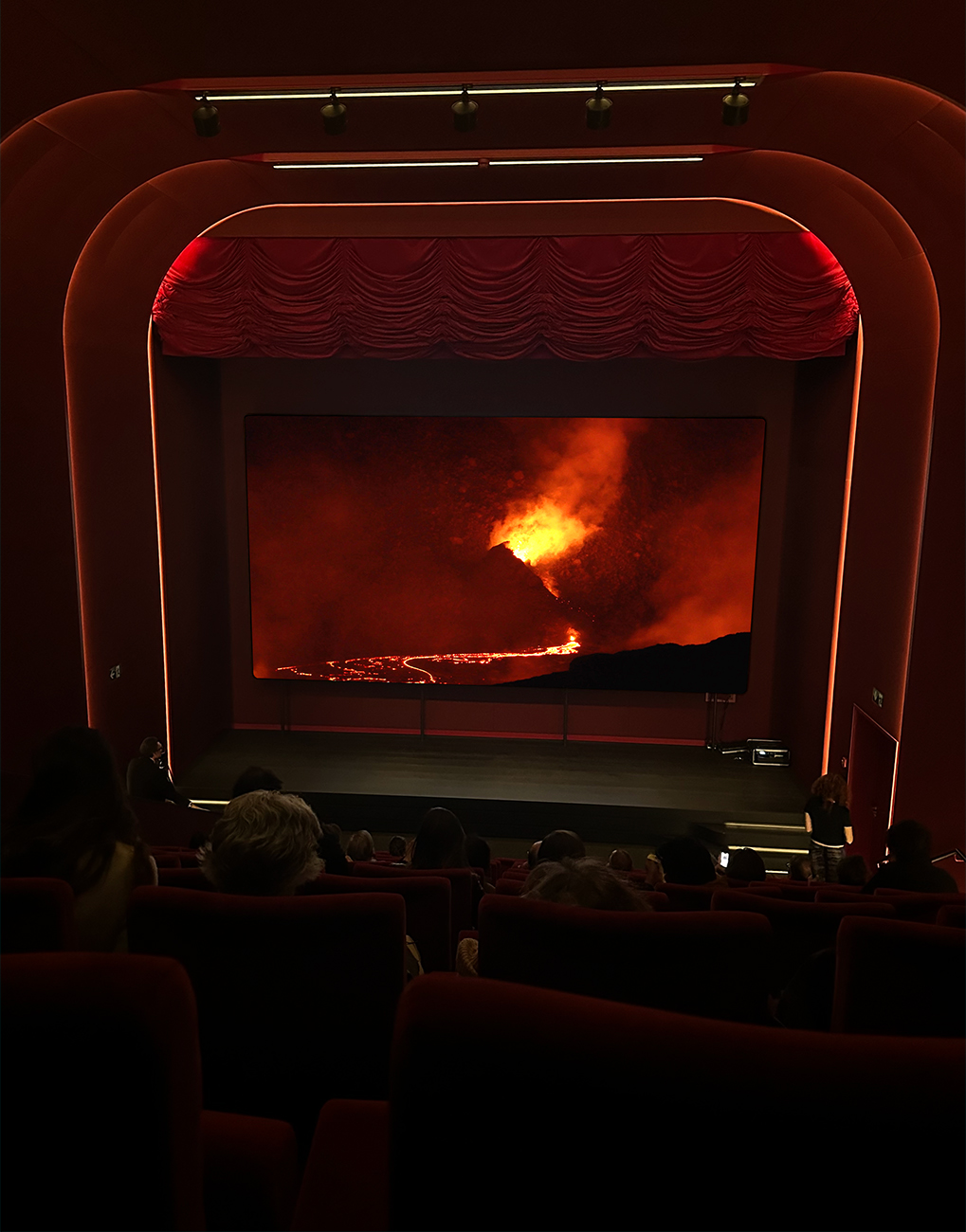
Equifinality
Kīlauea erupts. Planetary geologists examine the Hawaiian subsurface as a proxy for Mars. Astronomical observatories on a sacred mountain, the ruins of a UFO cult’s galactic embassy, extraplanetary robots imaging themselves. Shot in and around Hawai’i Volcanoes National Park, this short film probes the haunting metaphysics at the heart of speculative scientific practices and features archival footage from NASA’s Jet Propulsion Laboratory and music by John Cage.
 Lithospheric Transference (Norge)
Lithospheric Transference (Norge)Cars parked on the remains of a Bronze Age ceremonial site, a Texan geologist builds the largest homemade telescope in Scandinavia, and a deep-sea diver recalls his experiences of the Moon. Shot over a one-month period in August 2022, Lithospheric Transference (Norge) documents the uncanny array of technologies, institutions and histories that are endemic to Norwegian fossil capitalism. The film emphasizes the relationship between visualization and extraction, showing how hyper-resolution giga-pixel scans of fossilized Jurassic carbon, technical simulators at vocational schools, archaeological methodology and experimental marine construction technologies manifest themselves as perpetual revisions to an unending present.
→FILM TRAILER
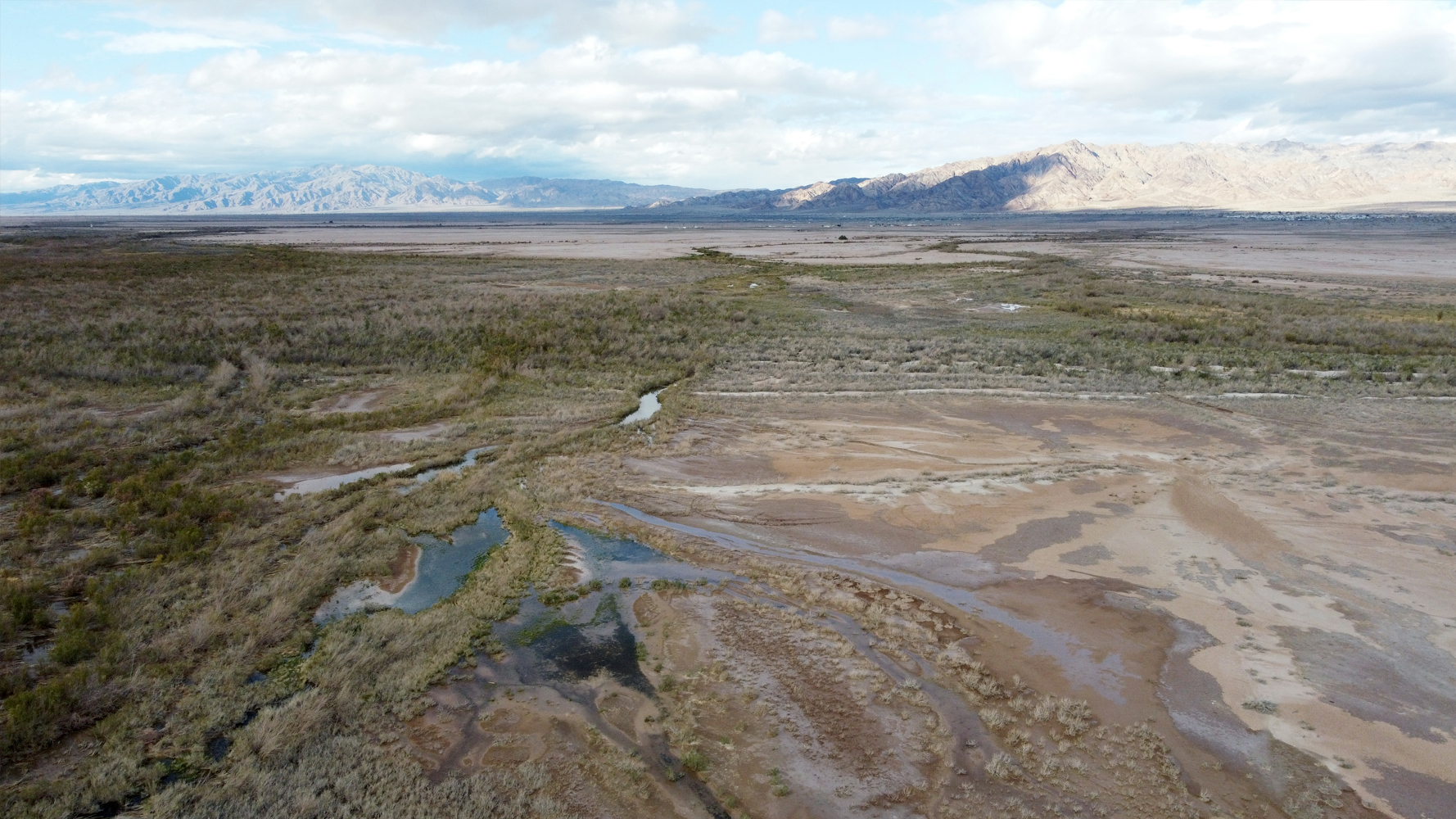 Bombay Beach Wetland Enhancement Project
Bombay Beach Wetland Enhancement ProjectThe Salton Sea continues to recede, and its drying lakebed is a growing threat to air quality and human health throughout Southern California and Northern Mexico. Near the town of Bombay Beach, however, water that once flowed into the Sea has begun to form a vast expanse of wetlands, and Hans Baumann is working with Audubon California to stabilize, enhance and expand some 250 acres of this emergent habitat. These incidental wetlands not only mitigate dust pollution and improve air quality, they are also a potential recreational resource for local communities and act as vital habitat for migratory bird populations along the Pacific Flyway.
→MORE INFO

Archiving an Aquarium is a 21-channel video art installation that explores Birch Aquarium as a site of media production and public science practice. Drawing from abandoned video archives produced by Scripps Institution of Oceanography and modeled after blueprints from the Aquarium’s 1992 “Hall of Fishes,” the piece reflects upon the primary—and ever-changing—role that technological visualization plays in representing ocean ecologies to the public. Made in collaboration with art historian James Nisbet and part of Getty Pacific Standard Time 2024: Art x Science.

Crystalline Basement w/Karen Pinkus, in Accumulation: The Art, Architecture and Media of Climate Change
“...The tension between stochasticity and stability is inherently geological. Slow forces aggregate massive change over countless millennia and the silence of this creeping timescale conveys stability. Earthquakes, landslides, and volcanic eruptions are massive, sudden, and transformative from the human vantage point, but from the geological perspective, these events are embedded within processes of a far greater magnitude. In the realm of the geological, epochs of incomparable complexity are compressed and layered like homogenous plastic blocks until—billions of years after their formation—they are subducted and cannibalized by the Earth’s molten core. The relative simplicity of geological materials all but erases the abiotic chaos that led to their creation: swirling dust, alien meteorites, pounding lifeless seas, super continents, mega volcanoes and so on....”
Ecological Collapse, Indigenous Communities and Land Art – Artist Encounter with Hans Baumann
Universität Bern / Mediating the Ecological Imperative
“We screen a film from a work in progress by land artist Hans Baumann and discuss his long-term creative partnership with the Torres Martinez Desert Cahuilla Indian tribe and their collective reflection upon a rapidly disappearing sea in the California desert. The event is supported by the Stanley Johnson Foundation and the first of a series of Artist Encounters (2021-24).”
→FILM AND DISCUSSION
Universität Bern / Mediating the Ecological Imperative
“We screen a film from a work in progress by land artist Hans Baumann and discuss his long-term creative partnership with the Torres Martinez Desert Cahuilla Indian tribe and their collective reflection upon a rapidly disappearing sea in the California desert. The event is supported by the Stanley Johnson Foundation and the first of a series of Artist Encounters (2021-24).”
→FILM AND DISCUSSION
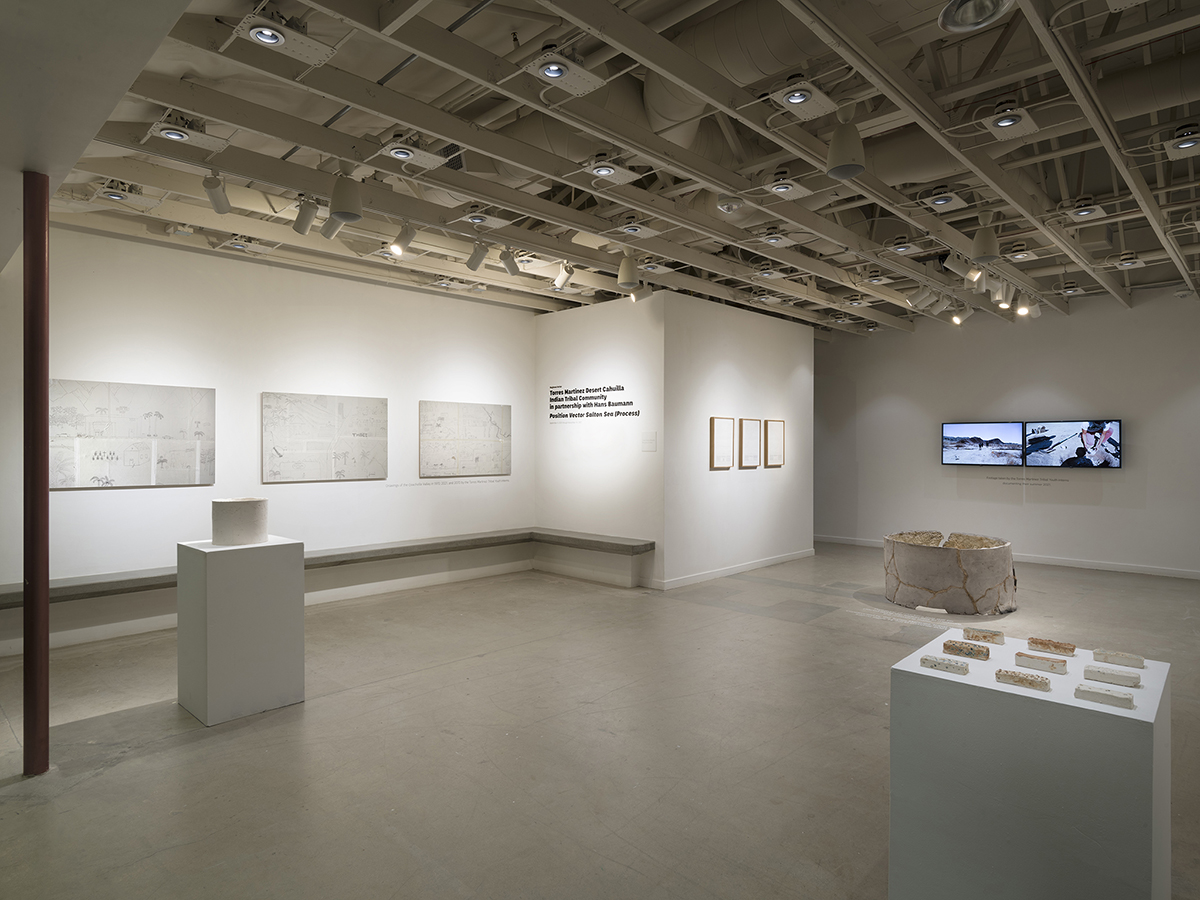
Position Vector Salton Sea (Process)
in partnership with the Torres Martinez Desert Cahuilla Tribal Community
ICA San Diego
→EXHIBITION INFO & IMAGES

“...In the end, much of the arid West is experienced (and romanticized) by humans as pure surface—’empty space’ bisected by roads and circumscribed by infrastructure. Our theses for the ‘coming desert,’ a term we borrow from Mike Davis, are not meant to be exhaustive, but rather are speculative pathways that acknowledge the presence of complex socioecological and physiographic systems—some Indigenous, others Western—that inhabit and delineate this expansive landscape. For heuristic purposes we propose an admittedly artificial baseline that corresponds to the postwar American car-driven touristic imaginary: the desert as it offered itself to a certain gaze at a certain time of mobility, growth, and petro-optimism. Our theses engage art, engineering, social structures, and questions of indigeneity, geology, and human geography...”
 An Examination of the Legacy and Archives of the Rainbow Bridge-Monument Valley Expedition
An Examination of the Legacy and Archives of the Rainbow Bridge-Monument Valley ExpeditionArt book and research commissioned by The ONWARD Project
→PROJECT INFO & IMAGES
“...If we regard these 138,462 pyramids as a sort of public earthwork or land art intervention (and we do), we might realize that a biomass pyramid bears a striking similarity to a compost heap or landfill. Imagine 138,462 pyramids decomposing: innumerable microorganisms and trillions of invertebrates digesting the structure over the course of years or decades, generating a complex and unintended array of metabolic processes. Perhaps these structures would self-ignite from the heat of their own rot or collapse, destroying nearby settlements. Or perhaps they could generate energy through the methane emitted from their decay...”
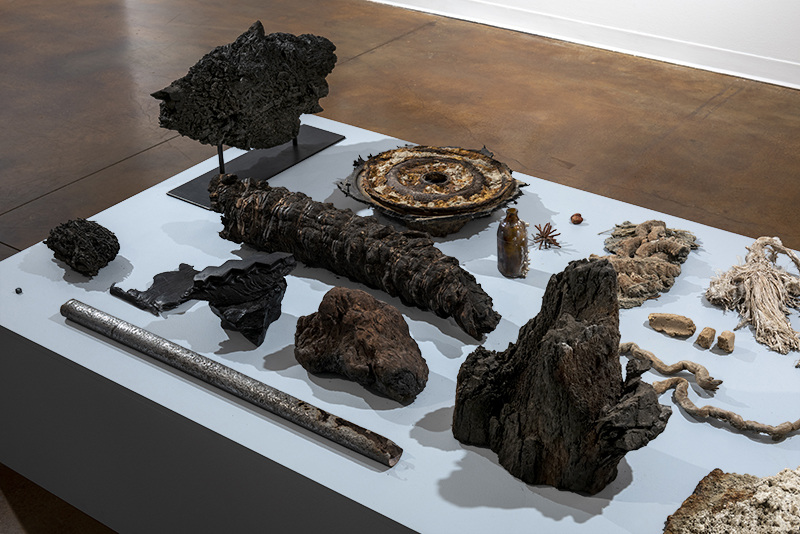
5 Distillations (Salton Sea)
Pitzer College Art Galleries
“...The sea’s hypersaline waters pulse with primitive life just as its shores are covered in the remains of one hundred million fish it can no longer sustain. This is not Nature as we conceive it, and so the Sea’s immense capacity for life is problematized and cast as dysfunctional. Yet this unbalanced ecosystem has value; it is not merely a domain of crisis...”
→EXHIBITION INFO & IMAGES
Pitzer College Art Galleries
“...The sea’s hypersaline waters pulse with primitive life just as its shores are covered in the remains of one hundred million fish it can no longer sustain. This is not Nature as we conceive it, and so the Sea’s immense capacity for life is problematized and cast as dysfunctional. Yet this unbalanced ecosystem has value; it is not merely a domain of crisis...”
→EXHIBITION INFO & IMAGES
“...By 2030, nearly 1/3 of this 340 square mile body of water—the largest in California—will have disappeared. As the sea’s waters retreat, vast expanses of playa are revealed. The dried lakebed—once habitat for millions of migratory birds—contains the residue of agricultural runoff and chemical pesticides and is a growing threat to human health throughout Southern California and Northern Mexico...This site-specific installation foregrounds Cahuilla voices and positions them as experts on the future of their own landscape. It does so by looking beyond the Sea’s constructed existence and engaging with—but not intervening upon—the entropic processes of its decline. The Sea is thus presented as a continuum of cultural and physiographic systems with no precise origin, no definitive end and no moral connotations.”
Position Vector Salton Sea in partnership with the Torres Martinez Desert Cahuilla Tribal Community
→PROJECT INFO & IMAGES
Position Vector Salton Sea in partnership with the Torres Martinez Desert Cahuilla Tribal Community
→PROJECT INFO & IMAGES

 “...The Great Salt Lake is shrinking. As I write this, the lake has reached its lowest level in recorded history. The reasons for this are many, but a changing climate and increased human demand for the water that feeds into the lake are foremost among them. This trend may portend an ecological catastrophe on scale with the disappearance of the Aral Sea, but, for now, the lake remains...”
“...The Great Salt Lake is shrinking. As I write this, the lake has reached its lowest level in recorded history. The reasons for this are many, but a changing climate and increased human demand for the water that feeds into the lake are foremost among them. This trend may portend an ecological catastrophe on scale with the disappearance of the Aral Sea, but, for now, the lake remains...”Black Forest (29,930,000 tons)
4Culture / Cougar Mountain Wildland Park
“...A great deal of matter was taken from this mountain, spread throughout the planet and never returned. Labor—the human movement of organic material—fundamentally altered Cougar Mountain, and this project re-engages labor to again alter the site’s trajectory. Over the course of 30 months, 50,000 lbs. of biochar was produced, and volunteer workers carried this tonnage across forested slopes and spread it over several acres of forest floor. The biochar is left here in perpetuity until it decomposes thousands of years from now. The outcome—already being lost to the forest’s growth—is thus part of a long-term process that supersedes any object quality the project possesses...”
→INSTALLATION INFO & IMAGES
“...A great deal of matter was taken from this mountain, spread throughout the planet and never returned. Labor—the human movement of organic material—fundamentally altered Cougar Mountain, and this project re-engages labor to again alter the site’s trajectory. Over the course of 30 months, 50,000 lbs. of biochar was produced, and volunteer workers carried this tonnage across forested slopes and spread it over several acres of forest floor. The biochar is left here in perpetuity until it decomposes thousands of years from now. The outcome—already being lost to the forest’s growth—is thus part of a long-term process that supersedes any object quality the project possesses...”
→INSTALLATION INFO & IMAGES
A Post-Natural History of the Falkland Islands
Harvard University Library Special Collections
“These miserable islands ... An undulating land, with a desolate and wretched aspect, is everywhere covered by a peaty soil and wiry grass, of one monotonous brown colour. Here and there a peak or ridge of grey quartz rock breaks through the smooth surface.”
- Charles Darwin, 1845
→PROJECT INFO & IMAGES
Harvard University Library Special Collections
“These miserable islands ... An undulating land, with a desolate and wretched aspect, is everywhere covered by a peaty soil and wiry grass, of one monotonous brown colour. Here and there a peak or ridge of grey quartz rock breaks through the smooth surface.”
- Charles Darwin, 1845
→PROJECT INFO & IMAGES



















